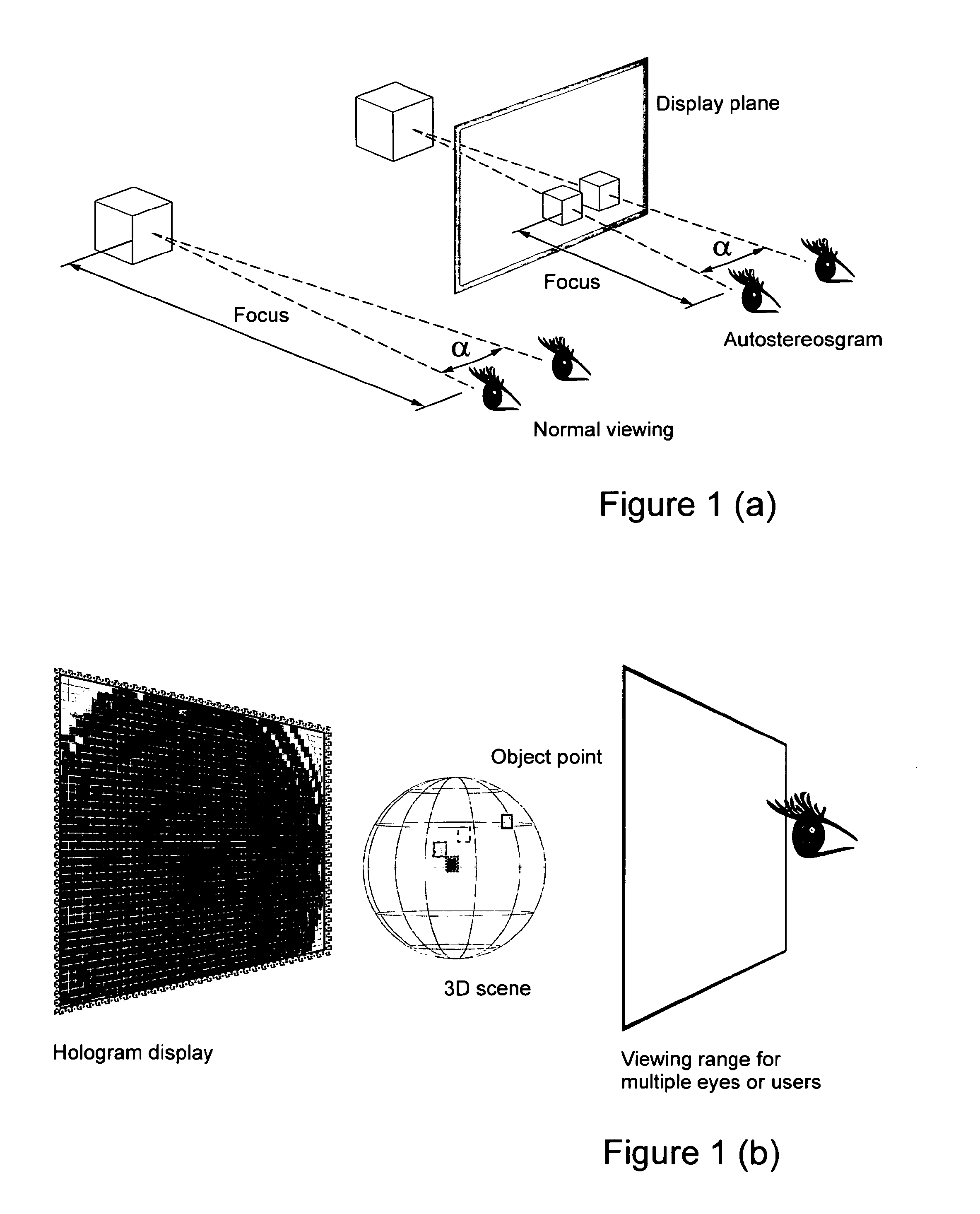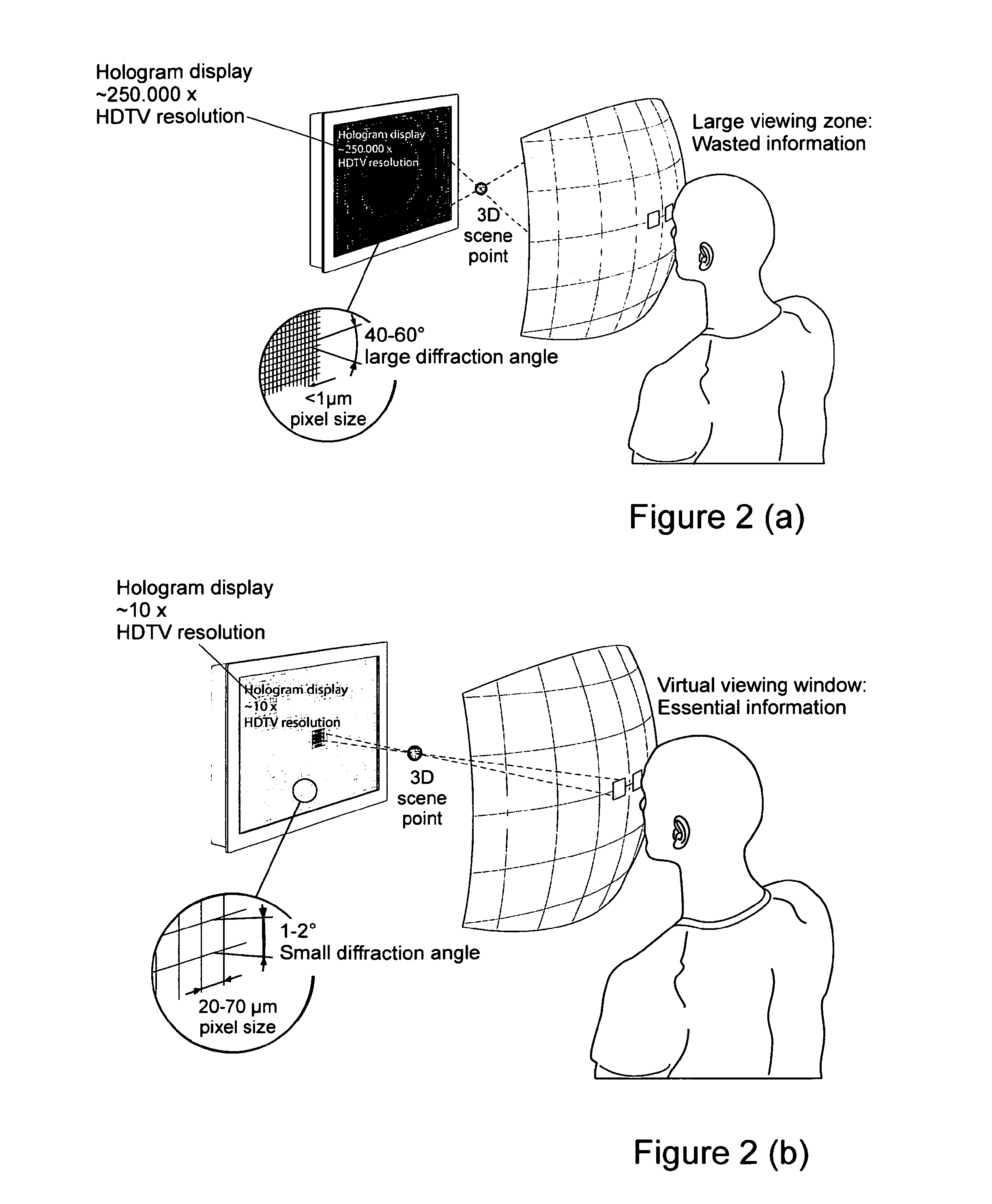Method and device for encoding three-dimensional scenes which include transparent objects in a holographic system
a technology of holographic system and three-dimensional scene, which is applied in the field of holographic system three-dimensional scene encoding, can solve the problems of high computational load, inability to re-compute sound signals after head movements, and inability to achieve realistic auditory sensation without re-computing sound signals, so as to reduce the loudness of sound
- Summary
- Abstract
- Description
- Claims
- Application Information
AI Technical Summary
Benefits of technology
Problems solved by technology
Method used
Image
Examples
Embodiment Construction
[0098]A view of a simple three-dimensional scene comprising an opaque and a transparent object is shown in a schematic presentation in FIG. 12. The three-dimensional scene which has to be reconstructed with a holographic system or a holographic display device (not shown) comprises an opaque object 200 and a transparent object 300. The two objects 200 and 300 can be divided into a plurality of individual object points (not shown in FIG. 12). A diffuse white light source (not shown) illuminates the three-dimensional scene uniformly from all directions. Light rays 101 to 110 of the light source are shown schematically in FIG. 12. The three-dimensional scene is reconstructed for an eye 400 of an observer. The location within the scene, from which the eye 400 of the observer apparently perceives the three-dimensional scene is determined to be the virtual observer position, also denoted with reference numeral 400. Object points being located on the averted side of the object 200 relative ...
PUM
 Login to View More
Login to View More Abstract
Description
Claims
Application Information
 Login to View More
Login to View More - R&D
- Intellectual Property
- Life Sciences
- Materials
- Tech Scout
- Unparalleled Data Quality
- Higher Quality Content
- 60% Fewer Hallucinations
Browse by: Latest US Patents, China's latest patents, Technical Efficacy Thesaurus, Application Domain, Technology Topic, Popular Technical Reports.
© 2025 PatSnap. All rights reserved.Legal|Privacy policy|Modern Slavery Act Transparency Statement|Sitemap|About US| Contact US: help@patsnap.com



